Como criar o logotipo personalizado perfeito para suas bolsas
Nov 12, 2025
No design de bolsas personalizadas, o logotipo não é apenas um elemento decorativo, mas sim o núcleo da identidade da marca. Um logotipo bem escolhido não só aumenta o reconhecimento visual do produto, como também transmite os valores da marca. Com a evolução contínua dos processos de fabricação, as formas de implementar um logotipo personalizado em sacolas tornaram-se cada vez mais diversas. Este artigo analisará os principais tipos de técnicas de personalização de logotipos em sacolas, desde métodos convencionais até tecnologias inovadoras, auxiliando as marcas na escolha da solução mais adequada. Parte 1: Opções de personalização de logotipo para bolsas de tecido Oxford, como mochilas de nylon, bolsas de poliéster, malas de viagem, mochilas escolares, bolsas transversais e assim por diante. 1. Serigrafia A serigrafia é uma das técnicas de produção de logotipos mais clássicas e amplamente utilizadas. Ela funciona transferindo tinta através de uma tela de malha para a superfície do tecido, criando padrões ou textos. Conhecida por suas cores vibrantes e acabamento impecável, é um dos métodos de impressão mais utilizados na personalização de bolsas. 1) Processo básico• Preparação da tela: Crie uma tela de serigrafia com base no design do logotipo, sendo que cada cor requer uma tela separada.• Colorir: Aplique a tinta uniformemente sobre a superfície do tecido, permitindo que ela passe pela malha para formar o desenho.• Secagem e cura: Deixe o tecido secar ao ar livre para garantir que a tinta adira firmemente ao material.• Pós-tratamento: Verificar se a impressão está completa e a uniformidade das cores, fazendo os reparos necessários ou adicionando uma camada de verniz transparente para proteger a tinta. 2) Vantagens• Cores vibrantes e alta cobertura: Proporciona efeitos visuais impactantes, com o logotipo claramente visível mesmo à distância.• Durabilidade: A tinta, depois de seca, adere fortemente ao tecido e é resistente ao desbotamento e descascamento.• Aplicabilidade: Adequado para diversos materiais planos ou ligeiramente curvos.• Custo-benefício: Oferece uma excelente relação custo-benefício na produção de grandes quantidades, especialmente se o logotipo for sólido ou tiver poucas cores. 3) Desvantagens• Não é adequado para designs multicoloridos complexos: cada cor requer uma tela separada, o que torna o processo de impressão bastante demorado e caro.• Desempenho de detalhes limitado: Não é ideal para designs de alta precisão, cores gradientes ou imagens fotográficas.• Requisito de lisura da superfície: Se a textura do tecido for muito áspera ou tiver contornos muito acentuados, isso pode levar à aplicação irregular da tinta ou a impressões com defeito. 4) Materiais e aplicações mais adequados para bolsasA serigrafia é especialmente adequada para materiais com superfícies relativamente lisas, como náilon, poliéster, algodão e tecidos de lona.• Bolsas de nylon e poliéster: como mochilas esportivas, bolsas de viagem e mochilas escolares, onde a estampa é nítida, durável e lavável.• Sacolas de lona e algodão: como sacolas ecológicas, sacolas de compras e sacolas de pano. A serigrafia não é recomendada para uso em couro genuíno, couro PU ou tecidos com texturas acentuadas, pois a tinta pode não aderir bem, causando desbotamento ou manchas. 2. Impressão por Transferência Térmica A impressão por transferência térmica é um processo que utiliza alta temperatura e pressão para transferir um desenho de uma película de transferência para a superfície do tecido. É conhecida pela sua riqueza de detalhes e cores vibrantes, sendo ideal para bolsas que requerem padrões complexos ou logotipos multicoloridos. Comparada à serigrafia, a impressão por transferência térmica reproduz melhor efeitos visuais como gradientes e sombras, tornando-se uma das técnicas mais populares na produção de bolsas. 1) Processo básico• Impressão do design: Primeiro, o design do logotipo é impresso em uma película de transferência especial (ou papel de transferência).• Posicionamento: A película de transferência impressa é cuidadosamente colocada sobre o tecido da bolsa.• Aquecimento e prensagem: Utilizando uma prensa térmica, a tinta é transferida para o tecido a altas temperaturas (cerca de 140°C a 180°C) e alta pressão.• Remova a película: Após o resfriamento, a camada de película é removida, deixando o desenho firmemente aderido ao tecido. 2) Vantagens• Detalhes precisos e excelente desempenho de cores: Permite alcançar efeitos como gradientes, sombras e imagens com qualidade fotográfica.• Ideal para designs complexos: Logotipos multicoloridos podem ser criados em uma única etapa, sem processos repetidos.• Superfície lisa e toque macio: A superfície é lisa e não parece pesada, ideal para bolsas justas ou leves.• Flexível para produção em pequenos lotes: Não necessita de tela de filtração, tornando-o adequado para desenvolvimento de amostras ou produção em pequenos lotes. 3) Desvantagens• Resistência térmica limitada: Se aplicado em tecidos que derretem ou deformam facilmente sob o calor, a superfície do tecido pode ser danificada.• Menor durabilidade que a serigrafia: o atrito prolongado pode causar descascamento ou desbotamento nas bordas do logotipo.• Custo mais elevado: O custo é superior ao da serigrafia, especialmente para logotipos de grandes dimensões. 4) Materiais e aplicações adequados para bolsasA impressão por transferência térmica é ideal para materiais que possuem resistência térmica moderada e superfície lisa, como náilon, poliéster e algodão T/C, não sendo adequada para materiais plásticos como TPU ou tecidos revestidos com PU.• Sacolas de algodão ou lona: Cores vibrantes e detalhes ricos do logotipo criam um forte impacto visual.• Mochilas infantis: Grandes áreas de tecido podem ser estampadas com padrões coloridos, criando um efeito visual dinâmico.• Tecidos reciclados e produtos ecológicos: O processo de transferência térmica é limpo e ecologicamente correto, sem resíduos de solventes, alinhando-se perfeitamente aos princípios da sustentabilidade. A impressão por transferência térmica não é recomendada para uso em couro genuíno ou lona de linho e algodão, pois as fibras naturais absorvem o calor de forma irregular, o que pode fazer com que as bordas do desenho se levantem ou causem discrepâncias de cor. 3. Técnica de Bordado de Logotipos O bordado é um método de personalização de logotipos que oferece uma sensação tátil e de camadas. Consiste em costurar padrões no tecido usando agulhas e linhas, refletindo o requinte artesanal da marca e adicionando um toque feito à mão e uma sensação de luxo à bolsa. Com exceção de algumas bolsas personalizadas de alta qualidade que podem manter bordados feitos à mão, hoje em dia a maioria dos logotipos bordados em bolsas é feita por meio de bordado digital e bordado computadorizado. Essas técnicas envolvem a importação de arquivos de design (por exemplo, formatos DST e EMB) para máquinas de bordar automáticas, obtendo costuras precisas e eficientes, garantindo densidade, direção e cor consistentes dos pontos, o que aumenta consideravelmente a eficiência da produção e a estabilidade do produto. Quase todos os tipos de técnicas de bordado (como bordado plano, bordado 3D e aplique) podem ser executados por máquinas de bordar computadorizadas, tornando-as amplamente adotadas na fabricação de bolsas personalizadas de médio a alto padrão. Bordado DigitalO bordado digital utiliza arquivos de imagem digital para controlar a máquina de bordar, permitindo alta precisão e consistência, sendo especialmente adequado para logotipos complexos e designs multicoloridos. Bordado computadorizadoA técnica de bordado mais comum usada na fabricação de bolsas. Ela utiliza trajetórias programadas para costura e troca de cores, permitindo a produção em massa com alta fidelidade no resultado final do design. A seguir, apresentamos todos os tipos de logotipos bordados e suas respectivas aplicações. • Bordado simplesEssa técnica utiliza pontos uniformes e planos para apresentar o design, ideal para textos de marca simples ou logotipos pequenos.Aplicações comuns: Sacolas de tecido Oxford. • Bordado em espuma 3DA espuma é adicionada sob os pontos, fazendo com que a área bordada se eleve, adicionando dimensão e textura.Aplicações comuns: bonés de beisebol, bolsas esportivas, mochilas estilosas. • Bordado 3D VazadoCombina uma estrutura 3D com um efeito oco, mantendo a leveza e, ao mesmo tempo, ampliando a sensação espacial.Aplicações comuns: Mochilas funcionais, bolsas com um visual arrojado e personalizado. • Bordado ApliqueFragmentos de tecido bordado são costurados nos materiais principais, aumentando o impacto visual.Aplicações comuns: Colaborações em edição limitada, designs em estilo retrô. • Bordado em laço/felpaUtiliza fios entrelaçados para criar uma textura macia e aveludada, proporcionando uma sensação tridimensional e aconchegante.Aplicações comuns: Bolsas infantis, bolsas para outono/inverno, como bolsas acolchoadas. • Bordado com pincelSemelhante ao bordado em laço, mas com fios mais curtos e densos, cria uma superfície extremamente uniforme, enquanto a escova de pelo curto proporciona um aspecto lateral.Aplicações comuns: bolsas para entusiastas de esportes. • Bordado com cordão/fitaUtiliza fios semelhantes a fitas para formar desenhos, resultando em linhas suaves com aparência metálica.Aplicações comuns: Logotipos de marcas de luxo, bolsas elegantes, bolsas de noite. • Bordado com fitaUtiliza fitas em vez de fios para criar efeitos tridimensionais de flores ou fitas.Aplicações comuns: Bolsas femininas com designs modernos e um forte toque artesanal. • Bordado com lantejoulasLantejoulas são costuradas nos tecidos, criando um efeito brilhante e reluzente.Aplicações comuns: Bolsas de noite, bolsas infantis, modelos para festas. • Bordado com miçangasContas ou partículas metálicas são adicionadas ao bordado, proporcionando uma textura luxuosa e intrincada.Aplicações comuns: Sacolas para presentes, bolsas/estojos de veludo • Bordado com fios puxadosAlguns fios são removidos e refeitos para criar uma textura fina e respirável.Aplicações comuns: Sacolas de linho, coleções em estilo natural. • Bordado com ilhós/recorteOs orifícios são perfurados e contornados para formar um padrão rendado e aberto, criando um visual leve e arejado.Aplicações comuns: Bolsas de verão, modelos com estilo cigano. Resumo: O charme dos logotipos bordados reside na sua textura 3D, durabilidade e alto reconhecimento. Diferentes técnicas de bordado podem ser combinadas de forma flexível com diversos tecidos, oferecendo estilos únicos, desde coleções casuais até peças de alta costura. 4. Estampagem a quente / Relevo / Baixo-relevo A estampagem a quente e o relevo são duas técnicas de criação de logotipos que conferem "textura" e qualidade artesanal às bolsas. Em vez de depender da cor, esses métodos utilizam calor e pressão para criar efeitos em alto ou baixo relevo no couro ou em materiais semelhantes, produzindo uma marca sutil, porém duradoura. 1) Princípios do Processo• Hot Stamping: Esta técnica utiliza uma ferramenta de metal aquecida para pressionar o logotipo na superfície do tecido sob alta temperatura e pressão. Dependendo do uso de folha metálica, pode ser dividida em hot stamping (com folha colorida ou metálica) e hot press (sem folha, deixando apenas a impressão).• Relevo/Baixo-relevo: Esses métodos utilizam dois moldes (superior e inferior) para aplicar pressão, criando um efeito em relevo (alto) ou rebaixado (baixo-relevo) na superfície do material. 2) Principais etapas do processo• Criar o molde: Um molde de cobre ou latão é personalizado com base no design do logotipo.• Posicionamento e alinhamento: O molde é fixado na prensa térmica e alinhado com a área do logotipo da embalagem.• Aquecimento e aplicação de pressão: O molde é pressionado sobre o material a uma temperatura definida (geralmente entre 100 e 150 °C) durante alguns segundos, imprimindo a textura do logotipo na superfície do material.• Resfriamento e Fixação: Após o resfriamento, forma-se uma impressão permanente ou efeito de hot stamping. 3) Vantagens do Processo• Textura sofisticada e forte reconhecimento: O logotipo se integra naturalmente à superfície do couro, oferecendo uma estética sutil, porém impactante.• Excelente durabilidade: o logotipo não desbota, descasca ou se desprende, mantendo uma marca visível por muito tempo.• Experiência tátil: Logotipos em relevo ou rebaixados oferecem uma sensação rica e tridimensional.• Ideal para produtos de alta qualidade: Comumente usado em pastas executivas, maletas, bolsas de luxo e muito mais. 4) Desvantagem• Adequado apenas para materiais específicos: O material deve ser espesso e flexível, como couro genuíno ou couro PU.• Não é adequado para desenhos complexos ou textos pequenos: detalhes em excesso podem causar o desfoque do desenho devido à distribuição irregular da pressão.• Variações de cor limitadas: A estampagem a quente e o relevo focam-se principalmente no efeito tridimensional, com representação de cores limitada.• Custos de moldes: Cada logotipo requer um molde personalizado, o que torna a produção em pequenos lotes relativamente cara. 5) Materiais e aplicações mais adequados para bolsasA estampagem a quente e o relevo são mais comumente usados em materiais como couro genuíno, couro PU, couro curtido vegetal e couro sintético, que podem formar texturas estáveis sob calor e pressão sem danificar a estrutura da superfície.• Coleções de bolsas executivas e de alta qualidade: como pastas de couro, maletas e porta-cartões de visita, onde o logotipo tem um efeito simples e refinado.• Bolsas e carteiras de marca: Logotipos estampados a quente em ouro ou prata podem realçar a sensação de luxo, enquanto logotipos em baixo-relevo oferecem uma elegância mais discreta. Lembrete importante: Este processo não é adequado para tecidos como nylon, lona ou poliéster, pois esses materiais não possuem o suporte necessário para formar impressões nítidas, e as altas temperaturas podem fazer com que o material derreta ou seja danificado. 5. Etiquetas de borracha / silicone / PVC flexível / epóxi Etiquetas de borracha, silicone e epóxi são técnicas de criação de logotipos macios, tridimensionais e coloridos, feitos de materiais plásticos flexíveis. Esses logotipos destacam o lado lúdico e o impacto visual da marca, oferecendo ao mesmo tempo resistência à água, à abrasão e recursos de segurança. 1) Processo de Produção• Design e Moldagem: Criar um molde com base no formato do logotipo, que pode ser feito de borracha, PVC flexível ou silicone.• Moldagem por injeção: Injetar materiais de borracha macia de diferentes cores no molde para formar um logotipo tridimensional multicamadas.• Tratamento com Epóxi (Opcional): Aplique uma camada transparente de epóxi ou gel na superfície do logotipo para torná-la lisa e brilhante, adicionando mais dimensão (principalmente para etiquetas de silicone/epóxi).• Corte e Acabamento do Verso: Corte o logotipo no tamanho desejado e aplique adesivo na parte de trás, costure-o ou utilize uma prensa térmica para fixá-lo na superfície da sacola. 2) VantagensCores vibrantes e forte efeito tridimensional: Consiga combinações multicoloridas e efeitos em relevo com impacto visual notável.• Macio e seguro: O material é flexível, não abrasivo e confortável ao toque.• Impermeável e resistente ao desgaste: Adequado para bolsas esportivas ou para atividades ao ar livre, mantendo a clareza e a visibilidade mesmo após uso prolongado.• Produção flexível: Pode ser personalizada em pequenos lotes, perfeita para edições limitadas ou designs personalizados a um custo acessível.• Aplicação versátil: Pode ser aplicado na superfície, alças ou acessórios de bolsas, oferecendo grande flexibilidade de design. 3) Desvantagem• Estilo casual e esportivo: Não é adequado para bolsas de luxo ou bolsas executivas de alta gama, pois o estilo visual tende a ser mais jovem e casual.• Renderização de detalhes limitada: linhas finas ou padrões de gradiente complexos podem não ser representados com precisão.• Resistência limitada a altas temperaturas: Altas temperaturas podem afetar a transparência ou a flexibilidade da camada de epóxi (rótulos de silicone/epóxi).• A superfície do logotipo acumula poeira facilmente: Etiquetas de borracha fosca ou epóxi macio podem atrair poeira e exigem limpeza regular. 4) Tecidos e aplicações adequadosEtiquetas de borracha, silicone e epóxi são basicamente adequadas para todos os materiais de bolsas, sejam elas de nylon, poliéster, lona ou couro.Os cenários de aplicação comuns incluem:• Bolsas esportivas, mochilas para atividades ao ar livre, bolsas para trilhas: impermeáveis e resistentes ao desgaste, com um logotipo tridimensional que enfatiza o estilo esportivo da marca.• Malas de viagem, malas funcionais: cores vibrantes, logotipos facilmente identificáveis e durabilidade.• Produtos acessórios: como sacolas para sapatos, sacolas para chapéus e pochetes, que aprimoram o reconhecimento visual e o efeito decorativo. 5) Sugestões de extensão• Se você deseja um logotipo nítido e brilhante, considere etiquetas de silicone/epóxi.• Se durabilidade, impermeabilização e saturação de cor forem prioridades, opte por etiquetas de borracha/PVC.• Uma combinação de ambos pode ser usada, por exemplo: usar uma etiqueta de borracha como logotipo principal com revestimento de epóxi para maior brilho e apelo tátil. 6. Logotipo em metal / Placa de identificação em metal Logotipos em metal e placas de identificação galvanizadas são as técnicas que melhor transmitem uma sensação de luxo e prestígio da marca em bolsas. Ambas são baseadas em materiais metálicos, com logotipos criados por meio de gravação, estampagem, relevo ou métodos similares, seguidos de tratamentos de superfície para alcançar diferentes estilos. Embora o processo básico seja semelhante, eles diferem ligeiramente em termos de efeito visual e foco de aplicação: Logotipo em metal: Pode ser feito com relevo 3D, impressões em alto-relevo ou desenhos em baixo-relevo. A cor pode ser obtida por meio de pintura em spray, preenchimento ou galvanoplastia. É mais decorativo e tridimensional, adequado para logotipos pequenos, acessórios de metal ou detalhes na bolsa. Placa de identificação eletrodepositada: Normalmente feita de chapas metálicas totalmente eletrodepositadas (com acabamentos como ouro brilhante, prata, grafite, etc.), oferecendo uma superfície brilhante e uniforme. Este estilo é mais refinado e elegante, frequentemente usado para logotipos principais de marcas ou identificação por placa. 1) Processo de Produção• Criação do design e do molde: Um molde de metal personalizado é feito com base no formato, tamanho e espessura do logotipo.• Processo de formação: O contorno do logotipo é criado por meio de estampagem, relevo ou corrosão.• Tratamento de superfície: O logotipo metálico recebe acabamento por meio de processos como galvanoplastia, jateamento de areia, polimento, escovação ou preenchimento com esmalte para atingir a textura e a cor desejadas.• Fixação e Instalação: O logotipo ou placa de identificação metálica é fixada à superfície da bolsa utilizando rebites, parafusos ou adesivos fortes. 2) Vantagens• Textura sofisticada: O brilho metálico e o efeito tridimensional realçam a qualidade premium da marca.• Durabilidade: Os logotipos em metal são resistentes ao desgaste e a altas temperaturas, mantendo a identificação clara ao longo do tempo.• Design versátil: Permitem obter diversas cores, texturas e efeitos em relevo/rebaixados, atendendo a diferentes estilos de marca.• Maior reconhecimento da marca: especialmente indicado para pastas executivas, bolsas de luxo, itens de edição limitada e coleções emblemáticas de marcas. 3) Desvantagem• Custo mais elevado: Os custos de moldagem, produção e montagem são mais altos do que os de etiquetas tecidas, etiquetas de borracha ou bordados.• Peso adicional: Em comparação com logotipos leves, logotipos ou placas de identificação em metal podem aumentar ligeiramente o peso da bolsa.• Requisitos de montagem: A instalação incorreta pode danificar o tecido ou fazer com que o logotipo se solte. Não é adequado para tecidos finos e macios: Para materiais leves, como náilon fino ou algodão, é necessário reforço adicional para uma instalação segura. 4) Tecidos adequados e cenários de aplicaçãoLogotipos metálicos e placas de identificação galvanizadas são mais adequados para materiais como couro genuíno, couro PU, couro sintético, tecido de nylon laminado espesso e lona resistente e pesada.Aplicações comuns incluem• Pastas executivas e bolsas para laptop: transmitindo uma imagem profissional e sofisticada.• Bolsas de luxo e bolsas de edição limitada: estilo uniforme com acessórios metálicos, que realçam a sensação de sofisticação.• Malas/Bolsas de Viagem: Os logotipos em metal são duráveis e resistentes a impactos, mantendo-se nítidos ao longo do tempo.• Sacolas de presente e colaborações com marcas: Placas de metal personalizadas aumentam o valor de colecionador e de exibição. Se o tecido for fino ou macio, considere usar uma etiqueta ou puxador de metal para exibir o logotipo. Isso mantém a sensação metálica, preservando a estrutura da bolsa. 7. Aplique de couro / Aplique de PU Os apliques de couro são uma das maneiras mais sofisticadas e elegantes de exibir um logotipo em bolsas. Feitos de couro genuíno ou sintético (como PU, microfibra, etc.), os apliques combinam o logotipo da marca com a textura do couro por meio de processos como estampagem a quente, relevo, gravação a laser e costura, criando um efeito visual natural e requintado. 1) Processo de Produção• Seleção e corte do material: Escolha o material de couro apropriado (couro de flor integral, couro dividido, PU, couro curtido vegetal, etc.) com base no estilo do design e corte-o no formato desejado.• Criação de logotipo: O logotipo é aplicado utilizando técnicas como estampagem a quente, relevo, gravação a laser, serigrafia ou aplicações metálicas, de acordo com as especificações do cliente.• Coloração e Selagem das Bordas: Alguns apliques de couro são tingidos e finalizados com óleo para suavizar as bordas e realçar a intensidade da cor.• Fixação por costura ou rebite: Os apliques de couro são normalmente fixados à superfície da bolsa por meio de costura, rebites ou adesivo termocolante. 2) Vantagens• Textura de alta qualidade: A textura natural e o brilho do couro conferem à bolsa uma forte personalidade de marca.• Diversas técnicas disponíveis: É possível combinar estampagem a quente, gravação a laser, incrustações em metal e outras técnicas de criação de logotipos para expressões únicas.• Durabilidade: O couro de alta qualidade garante que o logotipo permaneça nítido e resistente ao desbotamento após a gravação em relevo ou estampagem a quente.• Melhora a qualidade geral: Seja como um pequeno elemento decorativo ou uma grande vitrine da marca, os apliques de couro elevam significativamente o apelo do produto. 3) Desvantagem• Não lavável: O couro genuíno ou alguns tipos de couro PU podem deformar-se quando expostos à água, tornando-os inadequados para bolsas que precisam ser lavadas com frequência.• Sensível à temperatura: Altas temperaturas podem causar descoloração ou endurecimento do couro.• Custo mais elevado: O couro genuíno, em particular, é mais caro e é usado principalmente em bolsas de gama média a alta.• Não é adequado para tecidos muito macios: os apliques de couro são relativamente espessos e podem afetar o toque ou causar deformações localizadas se aplicados em tecidos leves. 4) Materiais e aplicações adequados para bolsasOs apliques de couro são compatíveis com uma variedade de tecidos, mas são mais adequados para materiais mais grossos e que ofereçam maior sustentação, como lona, misturas de algodão e linho, tecido Oxford e couro.Aplicações comuns incluem:• Bolsas casuais de lona / Mochilas estilo universitário: Apliques de couro criam um contraste natural com o tecido, destacando uma estética rústica e terrosa.• Pastas executivas / Bolsas para laptop: Logotipos em couro realçam o estilo geral, reforçando o reconhecimento da marca.• Bolsas de couro genuíno / Bolsas de moda em PU: Os apliques de couro podem combinar com a cor do couro principal ou contrastar com ela, evidenciando o trabalho artesanal nos detalhes.• Malas de viagem / Malas estilo roupa de trabalho: Combinadas com tecidos pesados ou lona encerada, as aplicações de couro evocam um toque vintage e durável. 5) Sugestões de extensãoSe você deseja equilibrar profundidade visual com preocupações ambientais, considere usar apliques de couro PU vegano ou de couro reciclado, que oferecem uma aparência sofisticada aliada a um conceito sustentável.Além disso, os apliques de couro podem ser combinados com placas de metal, etiquetas tecidas ou etiquetas de borracha para criar um estilo misto exclusivo, aumentando o reconhecimento da marca e o apelo estético da bolsa. 8. Etiqueta tecida / Etiqueta de tecido Etiquetas tecidas ou etiquetas de tecido estão entre as formas mais clássicas e comuns de representação de logotipos em bolsas. Essas etiquetas são criadas tecendo fios em textos, padrões ou logotipos gráficos. São macias, delicadas e de acabamento refinado, servindo não apenas como elementos de identificação da marca, mas também como parte do design decorativo. 1) Processo de Produção• Design e layout do logotipo: Com base na fonte, espessura da linha e número de cores, é determinado o método de tecelagem apropriado (tecido plano, cetim, jacquard, etc.).• Processo de tecelagem: Utilizando um tear jacquard computadorizado ou uma máquina de tecelagem de alta velocidade, fios de cores diferentes são entrelaçados para formar o desenho do logotipo.• Moldagem e Corte: Após a moldagem em alta temperatura, a etiqueta é cortada no tamanho desejado e podem ser aplicados diversos tratamentos de borda (bordas cortadas a quente, costura de borda, bordas dobradas).• Pós-processamento e costura: A etiqueta pode ser fixada com adesivo ou costurada na parte externa, no forro, nas alças ou nas áreas internas da etiqueta da bolsa.Essa técnica enfatiza a precisão nas linhas e camadas de cor, alcançando um efeito delicado na representação da marca. 2) Vantagens• Requintado e durável: Como o logotipo é tecido diretamente com o fio, ele é resistente ao desbotamento, rachaduras ou descascamento, tornando-o adequado para uso a longo prazo.• Altamente adaptável: Pode ser costurado de forma flexível na parte externa da bolsa, no forro ou nas alças de ombro, tornando-o adequado para diversos estilos de design.• Macio ao toque: Não irrita a pele nem afeta o conforto de uso, sendo especialmente adequado para produtos justos ou leves.• Múltiplas opções de exibição: Disponível em acabamentos fosco, brilhante, jacquard, acetinado e outros métodos de tecelagem, permitindo a personalização para combinar com diferentes estéticas de marca.• Custo-benefício: Com baixos custos de produção e prazos de entrega curtos, as etiquetas tecidas são uma solução de logotipo amplamente utilizada e consolidada. 3) Desvantagem• Camadas limitadas: Apenas designs 2D podem ser representados; não é adequado para texturas tridimensionais ou metálicas.• Limitações de cores: Se o logotipo contiver muitas cores ou efeitos de gradiente, poderá ser difícil reproduzi-lo com precisão.• Não é à prova d'água nem resistente a manchas: a exposição a ambientes úmidos ou sujos pode afetar as cores.• Textura leve: Para bolsas que enfatizam estilos sofisticados ou estruturados, o impacto visual das etiquetas tecidas pode parecer insuficiente. 4) Materiais adequados para sacos e cenários de aplicaçãoEtiquetas tecidas ou de tecido são compatíveis com quase todos os materiais de bolsas, especialmente nylon, poliéster, lona, misturas de algodão e linho e tecido Oxford.Aplicações comuns incluem:• Mochilas e bolsas casuais: Frequentemente utilizadas para etiquetas externas da marca, alças de ombro, bordas de bolsos, etc., oferecendo uma aparência limpa e atraente.• Bolsas para laptop / Pastas: Etiquetas tecidas em preto e branco ou com baixa saturação transmitem uma imagem profissional e estável.• Malas de viagem/bolsas esportivas: Combine com etiquetas de borracha ou logotipos de transferência térmica para maior profundidade visual.• Etiquetas internas e tags de marca: Utilizadas para exibir o nome da marca, informações do produto ou origem de fabricação, combinando funcionalidade e decoração. 5) Sugestões de extensãoPara adicionar efeitos tridimensionais ou táteis às etiquetas tecidas, considere as seguintes variantes:• Etiquetas tecidas de alta densidade: Maior densidade de fios e padrões mais refinados, comumente usadas por marcas de luxo.• Emblema tecido: Reforço espesso e costura nas bordas para maior textura e sustentação.• Combinação de etiqueta de tecido + aplique de couro: Adicione um reforço de couro ou borracha à etiqueta de tecido para uma combinação de maciez e estrutura. Para marcas que promovem conceitos "ecológicos" ou "sustentáveis", etiquetas de fios reciclados (feitas de PET reciclado ou fios de algodão orgânico) podem ser usadas para se alinhar às tendências ambientais, mantendo uma aparência atraente. Parte 2: Soluções de personalização de logotipos para bolsas de moda, como bolsas de mão, bolsas tipo pasta, bolsas de festa, bolsas tote femininas, etc. Em comparação com as diversas técnicas de logotipo comumente usadas para as bolsas funcionais mencionadas anteriormente, os logotipos personalizados em bolsas de moda terão focos diferentes. Cada vez mais marcas estão adotando técnicas visualmente impactantes para tornar as bolsas atraentes à primeira vista. Essas técnicas de logotipo incomuns não apenas enriquecem a apresentação visual, mas também concretizam tentativas mais ousadas. 1. Logotipo com strass termocolante A aplicação de strass a quente é uma técnica na qual diamantes, cristais, pérolas, etc., são fixados na superfície do tecido por meio de prensagem a quente em alta temperatura. Os strass são presos ao material através de uma camada de adesivo termofusível, criando um efeito visual brilhante. 1) Processo de ProduçãoDisponha os strass no desenho → Use uma prensa térmica para aplicar calor → Derreta a camada adesiva para fixar → Deixe esfriar e formar uma superfície firme e brilhante. 2) Vantagens• Alto brilho e grande impacto visual.• Personalizável através de variações na cor, formato e densidade dos strass.• Cria um efeito de alto contraste quando usado com materiais como couro e veludo. 3) Desvantagem• Não é adequado para tecidos sujeitos a forte fricção ou flexão, pois os strass podem se soltar.• Não recomendado para tecidos impermeáveis ou bases de lona ásperas.• Custos mais elevados e prazos de produção mais longos. 4) Sacos adequadosBolsas femininas, bolsas de festa, nécessaires, embalagens para presentes, itens de edição limitada para exibição. 2. Logotipo impresso diretamente no tecido / Impressão digital O processo de impressão direta em tecido tornou-se uma solução inovadora e muito popular nos últimos anos. Ele utiliza a tecnologia de impressão a jato de tinta para imprimir logotipos diretamente na superfície do tecido, sem a necessidade de serigrafia ou clichês. 1) Processo• Preparação do projeto:O cliente fornece um logotipo ou arquivo de design (geralmente em formato vetorial ou de alta resolução).A impressora ajusta as cores e o tamanho do padrão com base na cor e na textura do tecido.• Pré-tratamento do tecido:O tecido é limpo e alisado. Alguns tecidos podem necessitar de um revestimento ou primer para melhorar a aderência da tinta.• Configuração de impressão:Os parâmetros de impressão, como resolução, gerenciamento de cores e densidade de tinta, são definidos na impressora digital.O tecido é fixado na plataforma de impressão para garantir que não se desloque durante a impressão.• Impressão digital:O logotipo é impresso diretamente na superfície do tecido usando uma impressora jato de tinta.A máquina consegue imprimir cores gradientes e desenhos complexos sem a necessidade de uma chapa.• Fixação pós-tratamento:Após a impressão, as cores precisam ser fixadas por meio de aquecimento ou vapor para melhorar a durabilidade.Alguns tecidos também podem receber um revestimento protetor. 2) Vantagens• Imagem de alta precisão e efeitos de cores gradientes.• Não há necessidade de placas, o que torna o processo de amostragem mais rápido e econômico.• Ideal para padrões complexos, personalização em pequenos lotes e designs multicoloridos. 3) Desvantagens• Requer um tecido bastante liso para um bom resultado.• Não é muito durável sob atrito prolongado ou exposição direta à luz solar.• As cores impressas podem variar ligeiramente dependendo do tipo de tecido. 4) Sacos adequadosProtótipos, amostragem de bolsas, exposição de amostras em mostras. 3. Logotipo gravado a laser A gravação a laser é um processo que utiliza feixes de laser de alta temperatura para queimar ou gravar a superfície do couro ou do metal, criando um logotipo na forma de uma gravação ou de uma marca de cor. 1) Processo• Preparação do projeto:O cliente fornece um arquivo de logotipo (geralmente em formatos vetoriais como AI, SVG ou imagens de alta resolução).O tamanho, a espessura da linha e o posicionamento do padrão são ajustados com base na cor e na textura do material.• Preparação do material:Selecione materiais adequados para gravação a laser, como couro genuíno, metal, madeira ou EVA. Limpe a superfície para remover poeira, óleo ou umidade, garantindo uma gravação nítida.• Configurações da máquina a laser:Ajuste a potência, a velocidade e o foco do laser para garantir que a profundidade da gravação seja uniforme, sem queimar o material.Importe o arquivo de projeto para o software da máquina de gravação a laser, definindo a posição e o tamanho da gravação.• Operação de gravação:O feixe de laser segue o caminho predefinido para queimar ou gravar a superfície do material, criando um efeito de gravação ou de queimadura de cor.Essa técnica permite detalhes precisos e linhas nítidas no logotipo.• Pós-processamento:Para materiais de couro, limpe cuidadosamente qualquer poeira e aplique óleo protetor ou um acabamento brilhante, se necessário.Para materiais metálicos, o polimento ou a aplicação de um revestimento protetor melhora a textura e a durabilidade. 2) Vantagens• Precisão extremamente alta, excelente representação de detalhes.• Resistente ao desbotamento, durável e resistente a arranhões.• Compatível com diversos materiais, como couro, metal, madeira e EVA. 3) Desvantagens• Não é adequado para materiais têxteis flexíveis.• A representação das cores é limitada pela cor base do material. 4) Sacos adequadosBolsas de couro, pastas executivas, embalagens de marcas de luxo. 4. Logotipo de impressão 3D A impressão 3D de logotipos é uma tecnologia de ponta que imprime ou aplica diretamente padrões tridimensionais em materiais de bolsas. Ela oferece uma sensação única de tecnologia e profundidade visual, tornando-a ideal para marcas sofisticadas ou modernas. 1) Processo básico• Preparação do projeto:O cliente fornece o arquivo do logotipo (vetor ou imagem de alta resolução) e o designer o converte em um modelo 3D usando software CAD ou 3D.O tamanho, a espessura e a estrutura do logotipo são determinados para garantir que ele seja adequado para impressão e possa aderir ao material da sacola.• Preparação do material e da impressora:Escolha o material de impressão com base no design (TPU, PLA, nylon, etc.).Prepare a impressora 3D, ajustando o bico, a temperatura e os parâmetros de precisão de impressão.• Operação de impressão:Importe o modelo 3D para o software da impressora (software de fatiamento) para gerar o caminho de impressão.A impressora constrói o logotipo camada por camada, seguindo o caminho, criando um efeito tridimensional.Caso seja necessário fixar o logotipo no tecido, isso pode ser feito com prensa térmica ou adesivo após a impressão.• Pós-processamento:Após a impressão, remova os suportes, alise, apare ou pulverize a superfície para melhorar a textura.Verifique se o logotipo está plano, com espessura adequada e aderente.• Instalação e Inspeção:Fixe o logotipo 3D à sacola ou à amostra (usando adesivo, costura ou prensagem a quente).Analise a posição, a firmeza e o efeito visual do logotipo. 2) Vantagens• Capaz de criar formas tridimensionais que os métodos tradicionais não conseguem.• Suporta uma variedade de materiais (TPU, PLA, nylon, etc.).• Extremamente futurista e com alto reconhecimento de marca. 3) Desvantagens• Custo mais elevado e ciclo de produção mais longo.• Adesão fraca em áreas macias ou curvas. 4) Sacos adequadosColeções da moda, edições de colaboração, peças de exposição, bolsas personalizadas de alta qualidade. 5. Impressão por sublimação A impressão por sublimação é uma técnica que utiliza altas temperaturas para vaporizar diretamente o corante, transformando-o de um sólido em uma fibra de poliéster que penetra no tecido. Ao contrário da serigrafia tradicional ou da transferência térmica, que permanecem apenas na superfície, a impressão por sublimação integra o logotipo ao tecido, proporcionando cores vibrantes, altamente duráveis e resistentes ao desgaste e à lavagem. É uma das técnicas de impressão de logotipos mais utilizadas para bolsas personalizadas de esportes, viagens e equipes. 1) Processo básico• Projeto e ConfiguraçãoUtilize um software de design profissional (como o Adobe Illustrator ou o Photoshop) para criar o design do logotipo.Converta o design para o modo de cor CMYK para garantir a precisão das cores.Selecione tintas de impressão e papel de transferência específicos para sublimação.• Impressão e TransferênciaImprima o desenho em papel de transferência especial usando uma impressora de sublimação.Coloque o papel de transferência impresso sobre o tecido a ser estampado (geralmente tecido de poliéster branco ou de cor clara).• Aquecimento por sublimaçãoAplique pressão a 180–200 °C durante 30–60 segundos. O corante sólido vaporiza-se, transformando-se em gás e penetrando nas fibras de poliéster.Como o corante vaporiza e penetra nas camadas moleculares das fibras, o desenho fica ligado molecularmente ao tecido.• Resfriamento e AcabamentoRemova o papel de transferência e deixe o tecido esfriar. O desenho se estabiliza e adere ao tecido sem a necessidade de qualquer revestimento adicional.O resultado final do logotipo é uma impressão suave e macia ao toque, com um aspecto natural. 2) Vantagens• Cores vibrantes e detalhes ricos: O corante penetra nas fibras, resultando em alta saturação de cor, alta resolução, gradientes e padrões com qualidade fotográfica.• Resistência ao desgaste e à lavagem, alta solidez da cor: Como o corante se liga ao tecido, ele não desbota nem descasca devido ao atrito ou à lavagem, garantindo excelente solidez da cor.• Toque macio, sem textura em relevo: O logotipo se funde ao tecido, ao contrário da serigrafia, que pode criar uma textura áspera. É particularmente adequado para bolsas flexíveis.• Ecológico: Não são utilizados PVC, borracha ou filmes adesivos, tornando o processo mais sustentável sem afetar a respirabilidade do tecido. 3) Desvantagens• Restrições de material: Adequado apenas para tecidos que contenham fibras de poliéster (ex.: poliéster, náilon); não pode ser usado em algodão puro, couro ou lona.• Limitações de cor: O corante é semitransparente e deve ser impresso em tecidos brancos ou de cores claras; não é eficaz em fundos escuros.• Requisitos de custo e equipamento: Requer uma impressora de sublimação dedicada e equipamento de prensa térmica, com controle preciso de temperatura e pressão.• Design permanente: Uma vez que o design é sublimado nas fibras, ele não pode ser alterado ou coberto. 4) Melhores AplicaçõesMelhores tecidos:• Poliéster• Nylon• Tafetá• Tecido de poliéster revestido impermeável (com revestimento não fechado) Tecidos não recomendados:• Algodão• Tela• Couro genuíno ou couro PU• TPU, EVA ou outros materiais não fibrosos Tipos típicos de bolsas:• Bolsas esportivas/Bolsas de ginástica: Cores vibrantes do logotipo que complementam o estilo esportivo.• Mochilas personalizadas para equipes: ideais para eventos escolares, torneios esportivos ou brindes corporativos.• Malas de viagem / Bagagens de mão: Resistentes e leves.• Sacolas promocionais para brindes: Ideais para produção em grande escala e com ótimo custo-benefício. 6. Outras técnicas inovadoras Além das técnicas avançadas mencionadas acima, algumas marcas estão explorando novas maneiras de apresentar seus logotipos. Entre elas:1) Impressão Refletiva: Esta técnica proporciona um efeito refletivo à noite, sendo comumente utilizada em bolsas para atividades ao ar livre ou esportivas.2) Impressão Digital UV (Logotipo com Impressão UV): Utiliza tintas de cura ultravioleta, permitindo a impressão de imagens coloridas em superfícies não absorventes, como metal e couro.3) Impressão em relevo: um processo em que a tinta se expande ao ser aquecida, criando um efeito tridimensional suave. Essas novas técnicas ampliaram as possibilidades para logotipos em bolsas além da tradicional "impressão plana", permitindo expressões multidimensionais que combinam funcionalidade, apelo visual e identidade da marca. Em resumo, desde os strass brilhantes dos logotipos termocolantes até a precisão da gravação a laser, das estruturas tridimensionais da impressão 3D à exatidão da impressão digital direta em tecido, essas tecnologias não apenas aprimoram o reconhecimento da marca, mas também abrem mais possibilidades para a comunicação visual. Autor
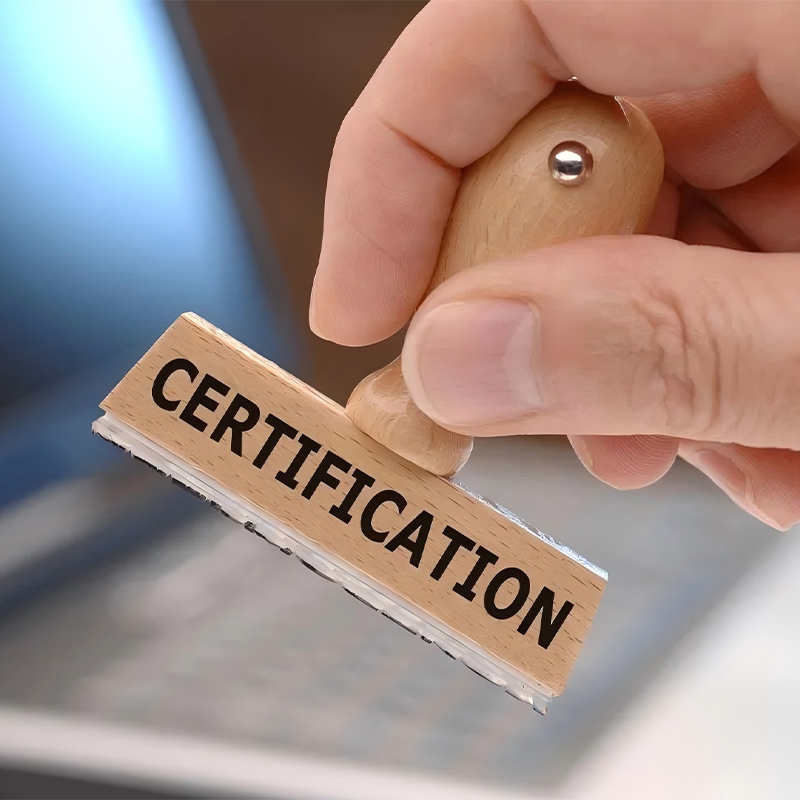
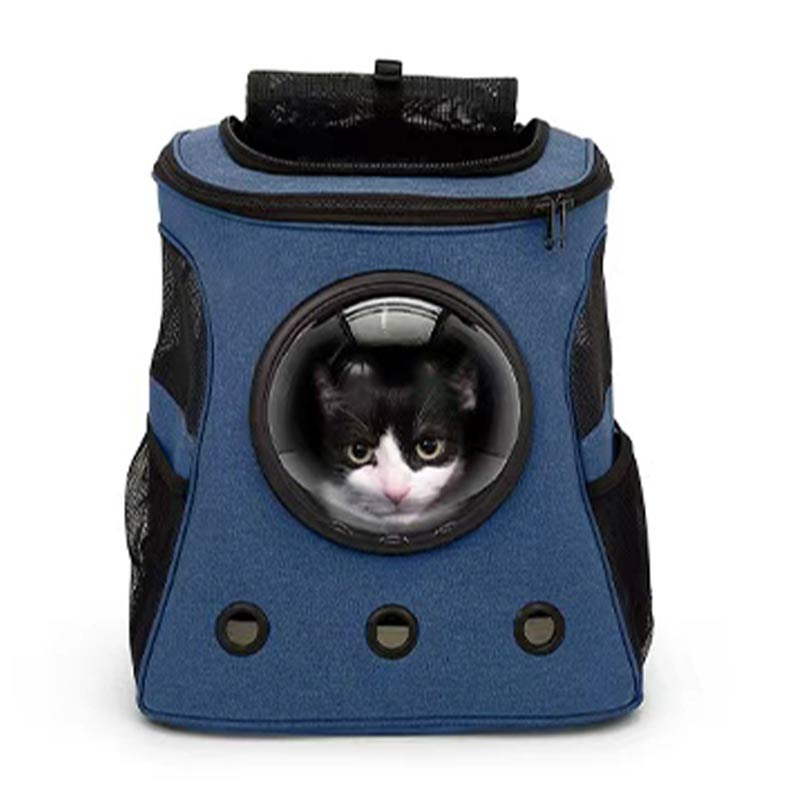
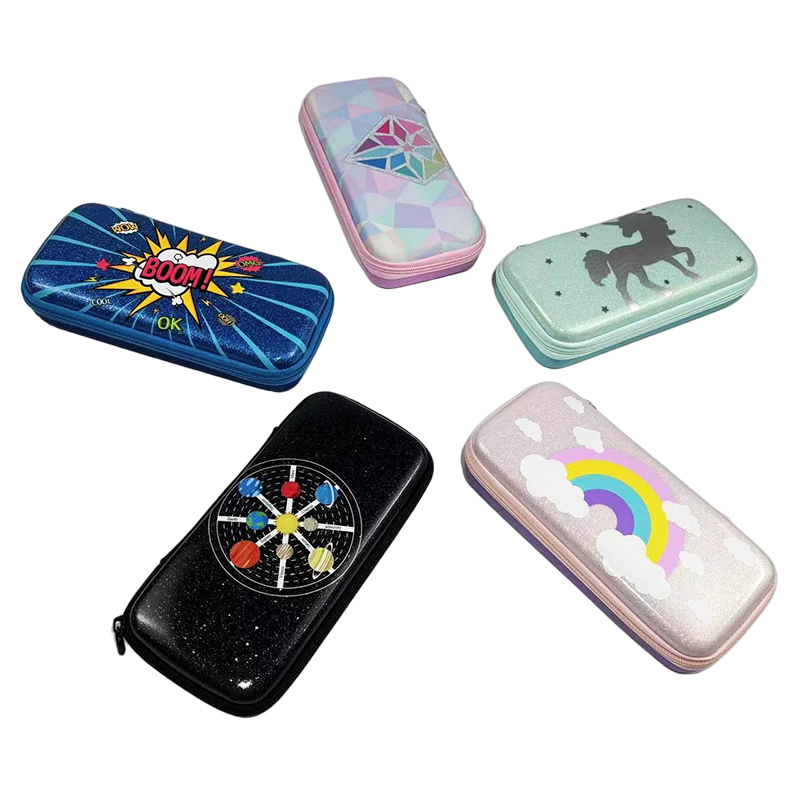
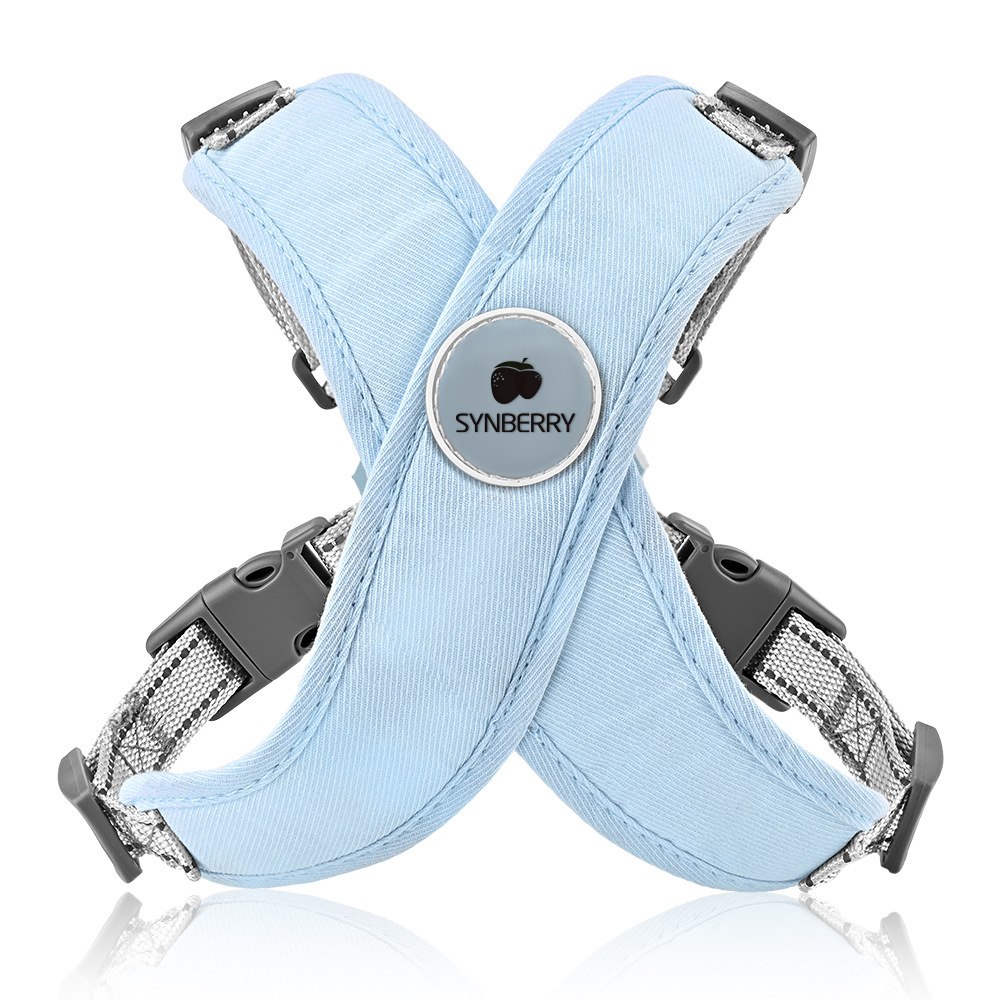
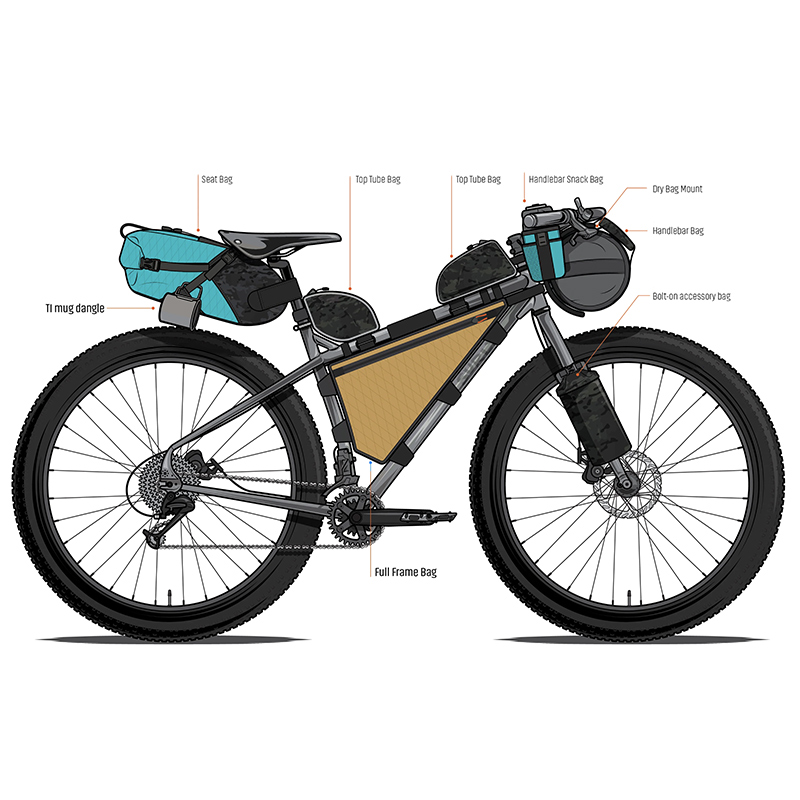



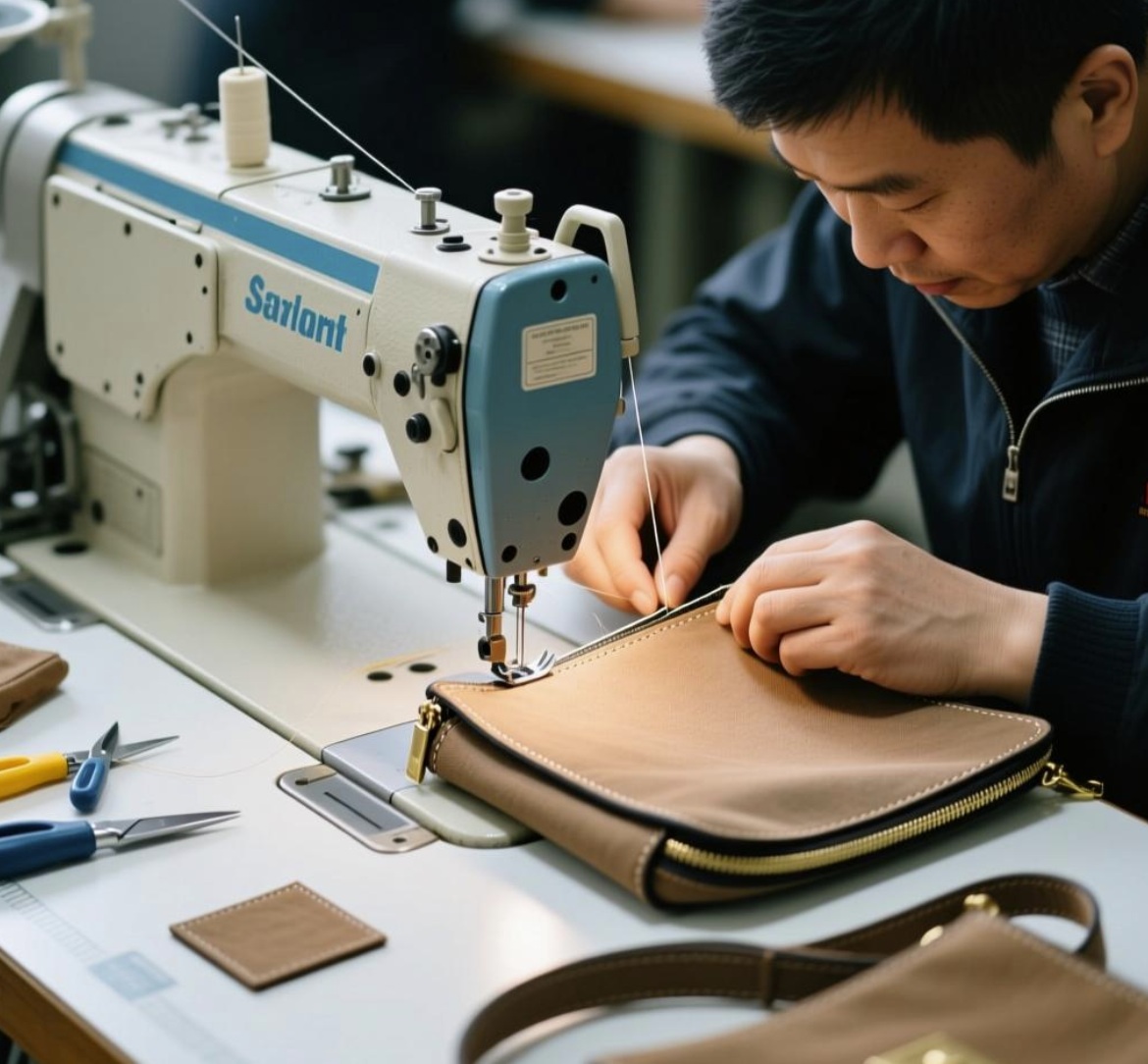
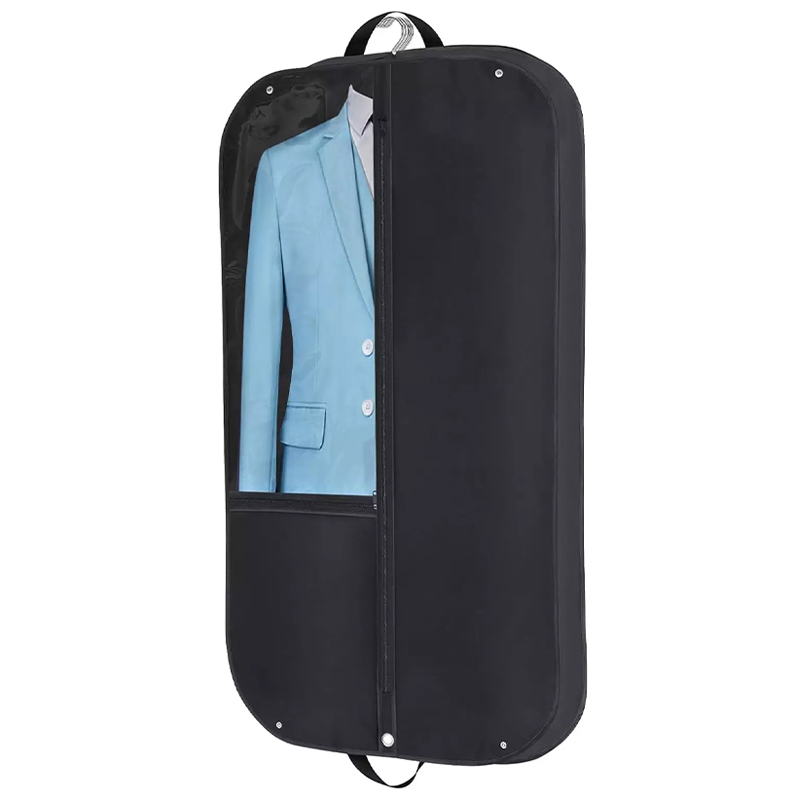
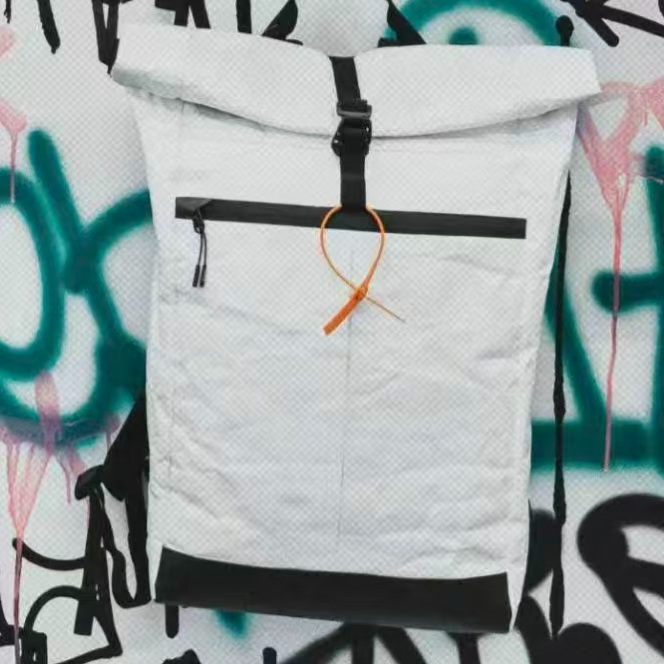
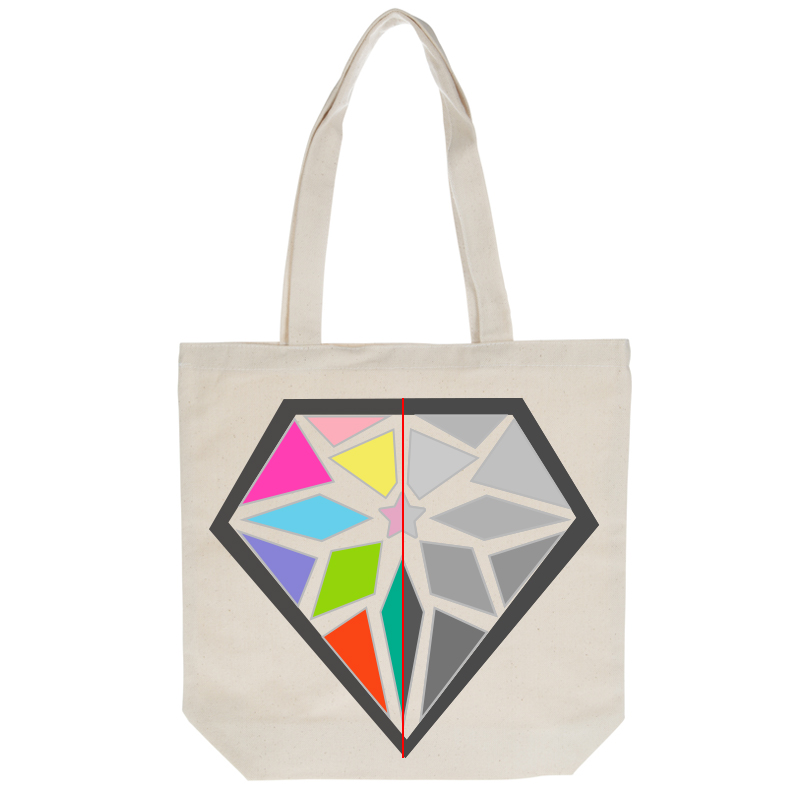
 SUPORTADO POR REDE
SUPORTADO POR REDE
